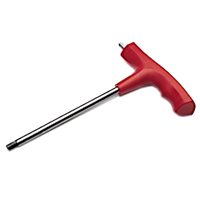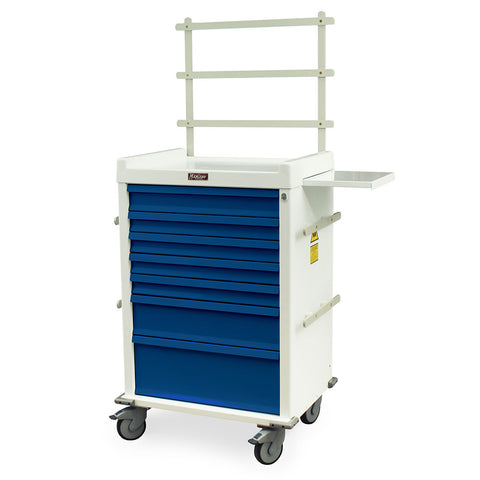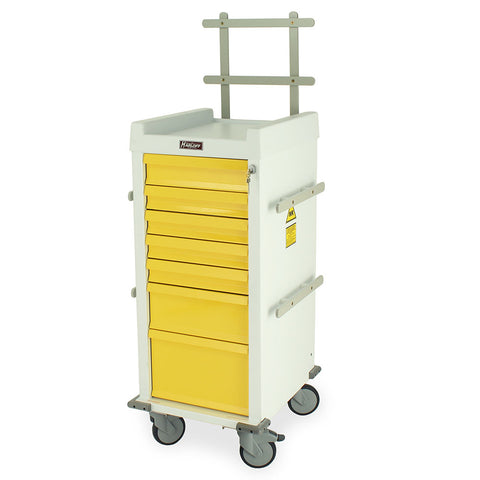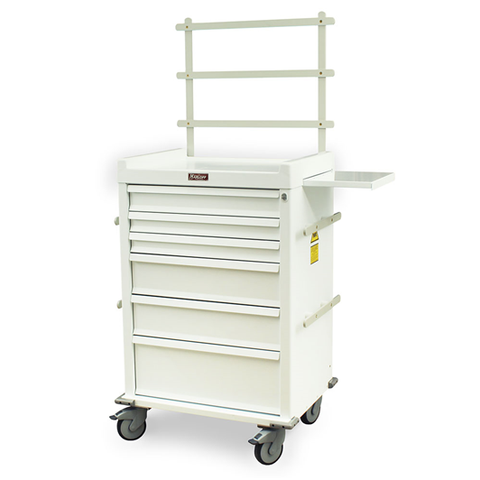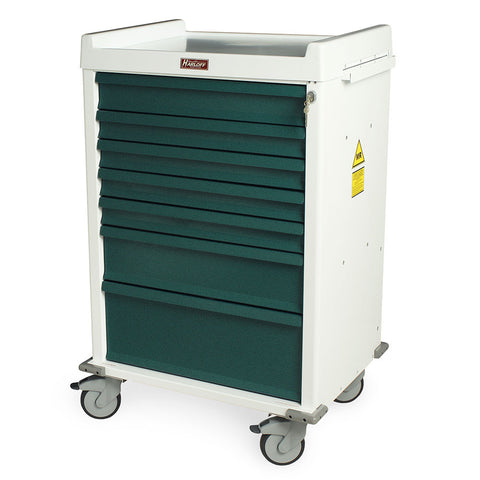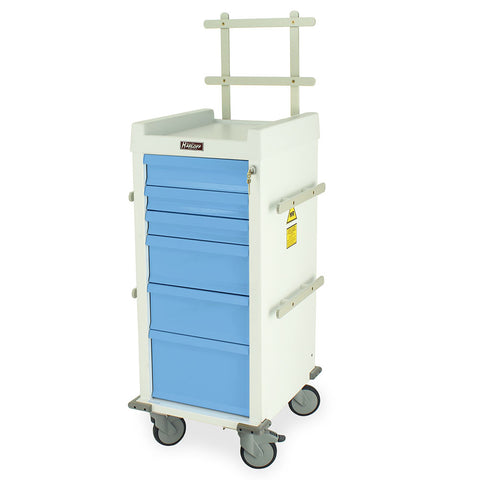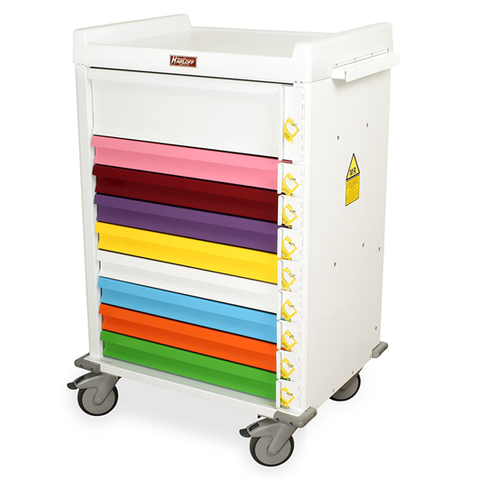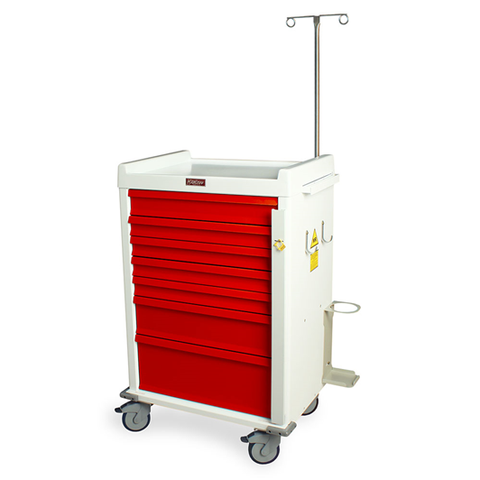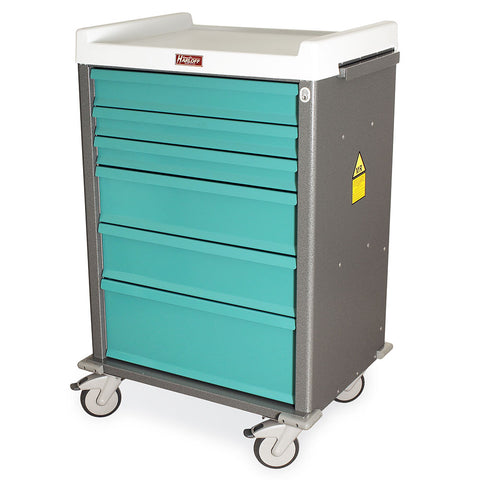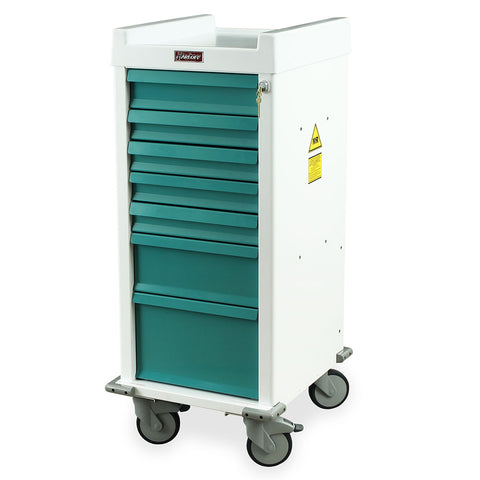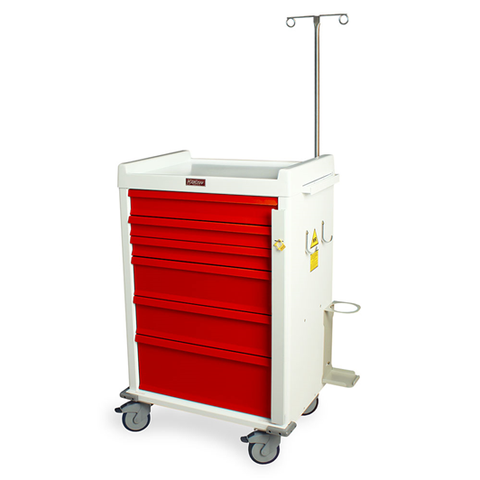MRI equipment safety is critical for protecting patients, staff, and ensuring high-quality imaging. The ASTM F2503 standard provides a universal framework for labeling MRI equipment as MR Safe, MR Conditional, or MR Unsafe. Understanding this standard is essential for healthcare buyers, radiology departments, and facility managers to select equipment that performs safely within MRI environments.
Using products from MRIMed, such as MRI-Conditional stretchers, non-magnetic wheelchairs, and IV poles, ensures compliance with ASTM F2503 while improving workflow efficiency and patient safety. This guide breaks down ASTM F2503, MR safety classifications, equipment selection, verification methods, and operational best practices.
Introduction to ASTM F2503 Standards
Why ASTM F2503 Matters for MRI Safety
ASTM F2503 is the globally recognized standard for MR labeling. It defines how medical devices should be classified based on their interaction with MRI magnetic fields. Without adherence to ASTM F2503, ferromagnetic objects in MRI suites can become dangerous projectiles, cause burns, or distort images, posing serious risks to patients and staff.
Using MRIMed products, such as MRI-safe gurneys, ensures that all equipment is tested for magnetic safety. Implementing these standards helps hospitals prevent accidents and maintain compliance with safety regulations.
History and Development of ASTM F2503
ASTM International developed F2503 to unify MRI safety labeling. Early MRI use revealed inconsistent labeling practices, leading to accidents caused by unlabeled ferromagnetic equipment. ASTM F2503 provided clear definitions for MR Safe, MR Conditional, and MR Unsafe categories, along with testing procedures and labeling requirements.
The standard is continuously updated to align with new MRI technologies, higher magnetic field strengths, and evolving safety practices. MRIMed ensures its MRI equipment meets current ASTM F2503 guidelines, reducing risk in both clinical and operational settings.
How ASTM F2503 Protects Patients and Staff
By following ASTM F2503, hospitals can categorize equipment based on risk, clearly communicate safety guidelines, and enforce MRI suite protocols. Proper labeling reduces incidents such as projectile accidents, image distortion, or interference with sensitive devices like pacemakers.
MRIMed MRI-Conditional stretchers and non-magnetic IV poles are examples of equipment designed according to ASTM F2503, providing peace of mind for MRI operators and patients.
Understanding MR Safety Classifications
MR Safe, MR Conditional, and MR Unsafe Explained
-
MR Safe: Materials and devices that pose no risk in any MRI environment, typically non-ferromagnetic metals or plastics. Example: MRIMed non-magnetic wheelchairs.
-
MR Conditional: Devices safe under specific conditions, such as magnetic field strength limits or patient positioning restrictions. Example: MRI-Conditional stretchers.
-
MR Unsafe: Devices that must never enter MRI suites due to the risk of attraction, heat generation, or interference. Example: older metal gurneys or equipment with ferromagnetic components.
Labeling Requirements and Symbols
ASTM F2503 mandates visual labeling, including text and symbols, to indicate safety classification. These labels help staff quickly identify which equipment is safe for Zone IV MRI use.
MRIMed labels all products with clear MR Safe or MR Conditional markings, ensuring quick identification in busy radiology departments.
Common Misunderstandings About ASTM Labels
Many healthcare staff assume that lightweight materials are automatically safe or that plastic equals MR Safe. ASTM F2503 clarifies that only certified, tested materials are safe in MRI rooms.
Learn more about MRI-Safe, MR-Conditional, and MR-Unsafe Labels
How ASTM F2503 Impacts MRI Equipment Selection
MRI-Conditional Stretchers and Gurneys
Choosing an ASTM F2503-certified stretcher is essential for safe patient transport in MRI suites. MRIMed offers adjustable-height MRI-Conditional stretchers with non-ferrous frames and non-magnetic wheels. These designs minimize projectile risk and maintain imaging accuracy.
Non-Magnetic Wheelchairs and Patient Transfer Devices
Wheelchairs used in MRI suites must be non-ferromagnetic. MRIMed provides lightweight, non-magnetic wheelchairs that facilitate safe patient transfers while adhering to ASTM F2503.
IV Poles, Monitors, and Support Equipment
IV stands, vital signs monitors, and infusion pumps must also comply with ASTM F2503. MRIMed’s non-magnetic IV poles and MRI-safe monitoring devices ensure no interference with imaging or magnetic field safety.
Explore MRI Zone IV Equipment Guidelines
Compliance and Verification for Buyers
Checking Manufacturer Documentation
Buyers should request full ASTM F2503 documentation, including magnetic testing results, MR Safe/Conditional certification, and product specifications. MRIMed provides detailed documentation for every MRI-safe product.
Third-Party Testing and Validation
Independent testing validates manufacturer claims. ASTM F2503 encourages third-party verification to confirm MR safety. MRIMed works with certified labs to test products under various MRI field strengths.
Aligning Equipment with MRI Zone Requirements
Different MRI zones (I–IV) have unique safety requirements. MRIMed labels each device according to ASTM F2503 and MRI zone protocols, ensuring proper deployment in radiology suites.
See How to Choose MRI-Safe Equipment: Compliance, Safety, and Zones
Equip Your Team with Tools They Can Trust
Get high-quality, MRI-dedicated equipment that supports safer scans, better positioning, and smoother patient care.
View Trusted Products
Operational Benefits of Following ASTM F2503
Improved Patient Safety and Staff Protection
Following ASTM F2503 reduces injuries from projectiles, burns, and equipment malfunctions. MRIMed products are engineered for predictable, safe operation in MRI environments.
Reducing MRI Suite Accidents and Projectiles
Non-ferromagnetic construction in MRI-Conditional stretchers and wheelchairs prevents objects from being pulled toward MRI magnets, protecting patients and staff.
Ensuring Consistent Imaging Quality
Ferromagnetic interference can distort MRI images. ASTM F2503-compliant equipment preserves image integrity, aiding accurate diagnoses and treatment planning.
Common Mistakes in ASTM F2503 Compliance
Ignoring MR-Conditional Labels
Assuming all MRI-labeled equipment is safe under any condition is a frequent mistake. Always follow manufacturer-specified restrictions.
Assuming “Plastic” = Safe
Plastic may contain metal reinforcements. Only tested, labeled equipment can be trusted.
Not Updating Equipment to Current Standards
Old devices may not meet modern ASTM F2503 updates. Regular audits and vendor updates ensure ongoing compliance.
Read What Hospitals Get Wrong About MRI-Safe Equipment
How to Integrate ASTM F2503 Standards into Procurement
Creating a Safe MRI Equipment Inventory
Maintain a catalog of ASTM F2503-certified devices. Include MRI-Conditional stretchers, wheelchairs, IV poles, and monitors.
Staff Training and Awareness Programs
Train staff to recognize MR Safe/Conditional devices, interpret labels, and follow MRI suite protocols.
Working with Certified Vendors like MRIMed
Purchase from trusted suppliers with documented ASTM F2503 compliance. MRIMed offers warranties, testing records, and guidance for safe MRI operations.
FAQ:
-
What is ASTM F2503 and why is it important?
It’s the global standard for MRI equipment labeling to ensure safety.
-
Can I use MR Conditional devices in all MRI rooms?
No, only under specified conditions indicated on the label.
-
How do I verify a device meets ASTM standards?
Check manufacturer documentation and ASTM testing reports.
-
Are plastic or aluminum devices always safe in MRI?
No, only those tested and labeled as MR Safe or MR Conditional.
-
What if a device’s ASTM labeling is unclear or missing?
Do not use it in MRI zones until verified. Consult the manufacturer or supplier like MRIMed.
Related Articles
-
How to Choose MRI-Safe Equipment: Compliance, Safety, and Zones
-
Understanding MRI-Safe, MR-Conditional, and MR-Unsafe Labels
